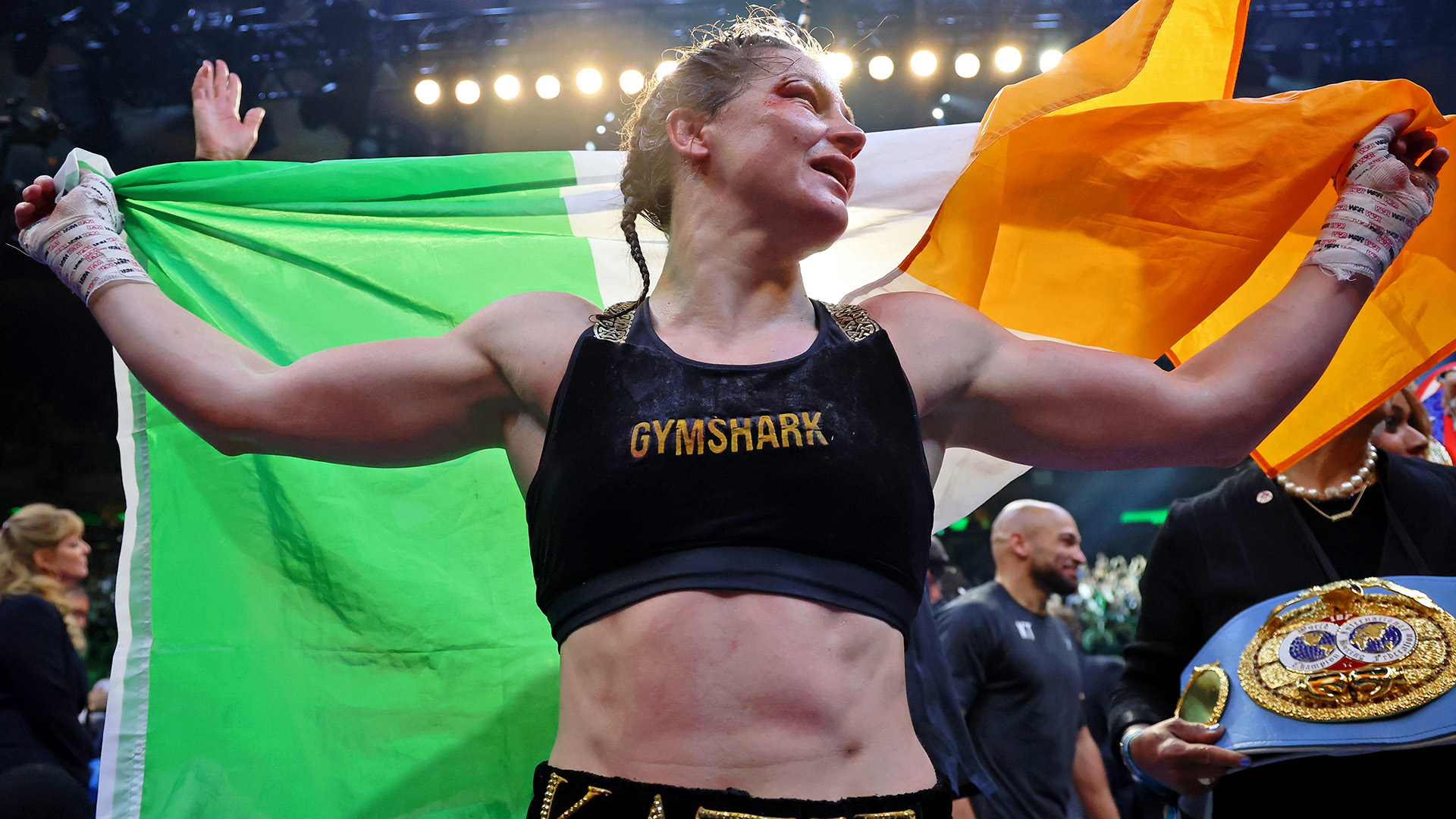WBC Favors Mexican Boxers in Female Flyweight Tournament
By: Ron Scarfone
The World Boxing Council (WBC) flyweight tournament in women’s boxing began in October. It was supposed to settle the debate as to who is the best female flyweight boxer in the world. Instead, it has created more questions than answers. Before I delve into that, I think it is important for you to know the past history of the WBC regarding their involvement in women’s boxing. There was a time when the WBC did not embrace women’s boxing. According to Global Boxing Union (GBU) President Jurgen Lutz, former WBC President Jose Sulaiman said that the WBC would not sanction women’s boxing while he was the president, but he later changed his mind because of former Women’s International Boxing Federation (WIBF) flyweight champion Regina Halmich of Germany making the equivalent of millions of dollars in euros.

The WBC began being involved in women’s boxing in 2005. That same year, the WBC approved a reduction in weight classes for women’s boxing from 17 to 13. According to Jose Sulaiman, these changes were made after a review by a “Medical Committee.” Sulaiman also stated that many other actions would be taken in order to make women’s boxing better and safer. I am not a doctor, but it seems to me that having less weight classes would actually make women’s boxing less safe. The WBC eliminated the cruiserweight division from women’s boxing, but this did not have any adverse effect since there are no female cruiserweights. The super middleweight division was eliminated as well as the super welterweight division and super lightweight division. Bear in mind that this statement by Sulaiman was made in 2005 which was the same year that they started being involved in women’s boxing. They did not have much experience in women’s boxing and yet they intended to make wholesale changes that they felt would improve the sport based on the recommendations of a “Medical Committee.” The doctors on that committee should have their medical licenses revoked. Under these rules, a female boxer who was a super lightweight would have to choose between being a lightweight or a welterweight which could affect her performance and her health.
These changes that were recommended by this “Medical Committee” were not followed by the WBC. Why? Because they are stupid. Also, less weight classes means less money to be made because of less champions and sanctioning fees. In 2005, Laila Ali won the vacant WBC female super middleweight title which was one of the divisions that the WBC supposedly eliminated from women’s boxing. Also in 2005, Mary Jo Sanders won the WBC female super lightweight title which was a division that was removed according to Sulaiman. In 2006, Jisselle Salandy won the vacant WBC female super welterweight title which was also one of the weight classes that the WBC stated that they deleted.
After Jose Sulaiman died, his son Mauricio Sulaiman became the WBC President. Currently, the duration of rounds in women’s boxing is two minutes instead of three and title fights are ten rounds instead of twelve. Mauricio Sulaiman stated that women have an 80% increased probability of getting a concussion than men. He further stated that “these are pure facts.” Women typically do not punch as hard as the men. Did that fact factor into the WBC’s decision? If the WBC is so concerned about the safety of female boxers, why not have one minute rounds and two minute breaks? How about 16 ounce gloves? The reality is that women will never make as much money as the men if the amount of time that they are scheduled to fight is less than the men. Regina Halmich was an exception and Million Dollar Baby was a movie. In the UFC, women and men have the same rules for amount and duration of rounds in title fights: 5 rounds of 5 minutes each. There is equality in the UFC that does not exist in women’s boxing.
Women’s boxing is very popular in Mexico. Soccer and boxing are Mexico’s two most popular sports. The WBC’s reasoning for limiting the time of women’s boxing is because of safety reasons. WIBF President Barbara Buttrick said that she prefers two minute rounds and ten round fights not because of safety reasons, but because she feels that a shorter fight is faster and more interesting. I can understand her opinion if she feels that women’s boxing is more entertaining as a shorter fight, although I do not agree with it. On the other hand, the WBC claims that women are more susceptible to fatigue and dehydration which is why the decision was made for the women to have different rules than the men regarding the time of each round and the amount of rounds.
These rules are not just with the WBC. All of the other sanctioning bodies are the same in this regard. 10 two-minute rounds has become the standard for women’s world title fights. In general, promoters can justify paying female boxers less money because their fights are scheduled for less time than the men. If the other sanctioning bodies were to change this so that the women have the same rules as the men, then the WBC would possibly be pressured to change their rules as well. The WBC has a history of changing their minds when money is at stake. Choosing to get involved in women’s boxing and retaining the weight classes are examples of this. However, the WBC has an advantage over the other major sanctioning bodies because it is based in Mexico. Because women’s boxing is popular in Mexico and because it is televised there, female boxers can probably make more money fighting there even if the WBC had to compete with women’s title fights scheduled for 12 three-minute rounds in other countries.
Since women’s boxing is so popular in Mexico, you would think that Mexican fans would want longer female fights. Maybe they do, but they would rather have something else. They want the Mexican boxers to win. Rounds that are two minutes each are more difficult for judges to score than rounds that are three minutes each if the judges are actually fair and impartial. Because of that, it is easier to rob boxers of victory if the judges are biased. It does not look as obvious that the judges are biased if the rounds are shorter in time. I also believe that the WBC wants shorter fights for the women because it makes it easier for the WBC’s Mexican world champions to win. I believe that this is not just because of the judging, but also because fights that are shorter in duration are physically easier for the Mexican female boxers. They do not need as much stamina and there are less punches being thrown at them. There is also another reason why I believe the WBC wants women’s fights to be shorter. Less time for the women means more time for the men. Women’s title fights are 10 rounds of 2 minutes each which equals 20 minutes. Compare this to the men’s title fights that are 12 rounds of 3 minutes each which equals 36 minutes. That is a difference of 16 minutes. The women are boxing 16 minutes less than the men. Therefore, those 16 minutes can be used for a 4-6 round men’s fight to be scheduled on the card.
Mauricio Sulaiman made an announcement about the WBC’s plans for a female flyweight tournament and listed potential contestants. 18 boxers made the list and 8 of them were selected to participate in the tournament. Four of them are from Mexico: Jessica Chavez, Ibeth Zamora Silva, Esmeralda Moreno, and Ana Arrazola. The other four came from other countries. Melissa McMorrow is from the United States, Raja Amasheh is from Germany, Naoko Fujioka is from Japan, and Nina Stojanovic is from Serbia. None of the Mexicans were scheduled to fight against each other in the preliminary fights of the tournament. If the fights go the distance, then the outcome is controlled by the judges and then all four Mexicans can proceed to the semifinals of the tournament.
Jessica Chavez who is the reigning WBC female flyweight champion was matched up against Naoko Fujioka. Fujioka is the reigning WBO female bantamweight champion, so she had to go down two weight classes in order to participate in this tournament. Of course, that is a disadvantage in itself. The fight was in Mexico which is another disadvantage. Chavez excels at holding and she repeatedly held Fujioka’s arms and put her head in a headlock. The referee would make them separate, but it kept happening. In round six, there was a clash of heads and Fujioka went down, but the referee ruled it as a knockdown. In the tenth and final round, the referee finally deducted a point from Chavez due to excessive holding. The judges’ scores were 96-92, 95-93, and 95-93 all in favor of Chavez by unanimous decision. I scored it 97-91 in favor of Fujioka. I believed that Fujioka won 8 of the 10 rounds.
The next fight of the tournament matched up Esmeralda Moreno against Melissa McMorrow. Both are former world champions. McMorrow lost to Mariana Juarez and Jessica Chavez by biased decisions in Mexico. McMorrow defeated Kenia Enriquez by split decision to win the WBO female flyweight title. About eight months later, McMorrow was in this tournament. Moreno won the IBO, WIBF, and GBU female super flyweight titles in April 2016. About three months later, she challenged Jessica Chavez for her WBC female flyweight title. Blood was coming out of Chavez’s nose. Moreno lost by a biased majority decision.
Moreno’s next fight was against McMorrow in the tournament. This was a fierce fight between two boxers who are both championship caliber. In round two, the referee deducted a point from McMorrow due to a headbutt which was accidental. Throughout the fight, McMorrow was usually getting the better of the exchanges. Moreno complained again about a headbutt in round eight, so the referee deducted another point from McMorrow. Moreno had a cut above her left eyebrow and it was bleeding, but she was getting punched in the face. The judges scored it 100-90, 100-88, and 98-89 all in favor of Moreno by unanimous decision. The judge that scored it 100-88 did not give McMorrow a single round. I scored it 95-93 in favor of McMorrow and that includes the two point deductions.
The third fight of the tournament had WBC Silver female flyweight champion Raja Amasheh of Germany defending her title against Ana Arrazola of Mexico. Amasheh was undefeated with 19 wins. Arrazola is the only one in the tournament to have double digit losses on her record with 11 losses. This fight was in Austria and apparently was not televised because there is no video of it on the Internet. The only article that I could find about the fight was not written by an unbiased journalist. It was a press release written by the WBC. The article stated that Arrazola landed a lot of clean counterpunches and that she had a close lead on the judges’ scorecards. There was open scoring, so the total scores were announced after rounds four and seven. Arrazola knew that she was leading after round seven with scores of 67-66, 67-66, and 68-65. After the tenth and final round, the judges’ scores were 96-94, 96-94, and 97-93 all in favor of Arrazola by unanimous decision. Amasheh is a much better boxer than Arrazola and I find it hard to believe that Arrazola pulled off the upset victory.
The fourth fight of the tournament has not happened yet, but it is scheduled for November 26 and it will be in Mexico. WBC female light flyweight champion Ibeth Zamora Silva will defend her title against former World Boxing Federation (WBF), WIBF, and GBU super flyweight champion Nina Stojanovic of Serbia. Stojanovic is undefeated at 9-0. This is supposed to be a flyweight tournament. Why is the WBC allowing this to be a light flyweight fight? I believe that there are two reasons. The WBC can collect a sanctioning fee by having Silva defend the title that she already has which is in the light flyweight division. It is also a disadvantage for Stojanovic to have to go down two weight classes. If the fight goes the distance which is likely, then expect the judges to award Silva the victory. If that happens, then all four Mexicans in the tournament will move on to the semifinals.
We do not know for sure what the matchups are going to be in the semifinals, but I am going to make some predictions. Because Silva is really a light flyweight, I predict that the WBC is going to give Silva the easiest road to the finals. I predict that Silva will be matched up against Arrazola. Silva has already defeated Arrazola in Silva’s pro debut and Arrazola is by far the worst boxer in the tournament. I believe that Chavez will be matched up against Moreno. Moreno is a better boxer than Chavez and she proved this when she lost to Chavez by a biased majority decision in July. However, the judges will likely rob Moreno of victory again. I believe that the WBC wants Jessica Chavez and Ibeth Zamora Silva to be in the finals. Both of them are rated in the top ten pound for pound by Ring Magazine and BoxRec.com. Of course, these lists are based solely on the results of the fights and do not take into consideration that there are biased decisions.
Like all the other kinds of championship belts, the WBC belt is made of metal and leather. In my opinion, the WBC female world champion belt does not look particularly attractive. I think it looks like a flower colored with green slime from the Ghostbusters movies. It is true though that the WBC belt is desired by female boxers because of its prestige. The winner of the WBC flyweight tournament will receive the WBC Diamond Belt. The belt apparently has real diamonds on it. It might as well have cubic zirconia instead of diamonds because this tournament is not going to determine who the best female flyweight in the world is. It may not even determine who the best Mexican female flyweight is. Kenia Enriquez was one of the potential participants, but she was not selected for the tournament. Enriquez defeated Arrazola in 2014 to win the vacant WBO female flyweight title.
Who will ultimately win the WBC Diamond flyweight belt? I believe that Chavez will be the winner. Chavez has the same last name as Julio Cesar Chavez who is considered to be the best Mexican boxer of all time. Chavez has an advantage of being a flyweight since the final fight will be (or should be) at flyweight. After all, it is a flyweight tournament. After Chavez wins in the finals, then she will be given the Diamond belt and then there will be a fiesta celebrating Chavez as the best female flyweight boxer in the world! It is good for business to have Mexicans winning in the tournament. The people of Mexico get a vicarious thrill when they see Mexican boxers being victorious against boxers from other countries.
When there is biased judging, it makes boxing similar to World Wrestling Entertainment (WWE) in that the outcomes are predetermined. What happens in the ring is not scripted like the WWE. Boxing is not choreographed beforehand, but the result of the fight can be determined beforehand. The scores just have to coincide with that planned result. What happened to the losers of the tournament so far who are the real winners? Of course, their boxing careers have suffered to some degree. McMorrow is scheduled to fight in California on December 3. It will not be televised, but people will come to see McMorrow who has a lot of fans. McMorrow should still be a world champion. If she was Mexican, she would be. McMorrow should be considered one of the best in the world pound for pound, but her losses in Mexico by biased decisions have prevented her from having that status. Fujioka is rated the No. 1 bantamweight in the world by BoxRec and is also rated No. 9 pound for pound. Ring Magazine does not rate her on its pound for pound top ten list. Fujioka does not currently have a fight scheduled. Amasheh is rated No. 10 at flyweight by BoxRec in spite of her loss by decision to Arrazola. Amasheh has no fight scheduled. Stojanovic still has to fight Silva and the fight is in Mexico.
Women’s boxing needs the support of American promoters in order to flourish in the United States. The fight card in California has all female fights, but it is not televised. Promoters need the support of television networks. If an event is not on television, then it is more difficult to schedule world title fights for that event. Promoters have limited budgets and they often cannot afford to schedule a women’s world title fight if their shows are not televised, even though they would have to pay much less money than for a men’s title fight. There are fees that have to be paid for world title fights such as a sanctioning fee, belt fee, and fees to the officials (judges and referee) who get paid extra for working in a world title fight. The female boxers also get more money than they would normally receive, although each boxer would be very fortunate to receive at least $5,000 if the title fight is not televised. Of course, the promoter can afford to schedule a 4-6 round women’s non-title fight, but women’s boxing has to be televised in order for it to be successful at the highest level in America. World-class boxers who have to go to their opponent’s home country for a shot at a title or to defend their title are not always treated fairly in and out of the ring. There are sanctioning bodies that would like to have title fights for women in America, but they are only limited by the lack of support from promoters, matchmakers, and television networks.











